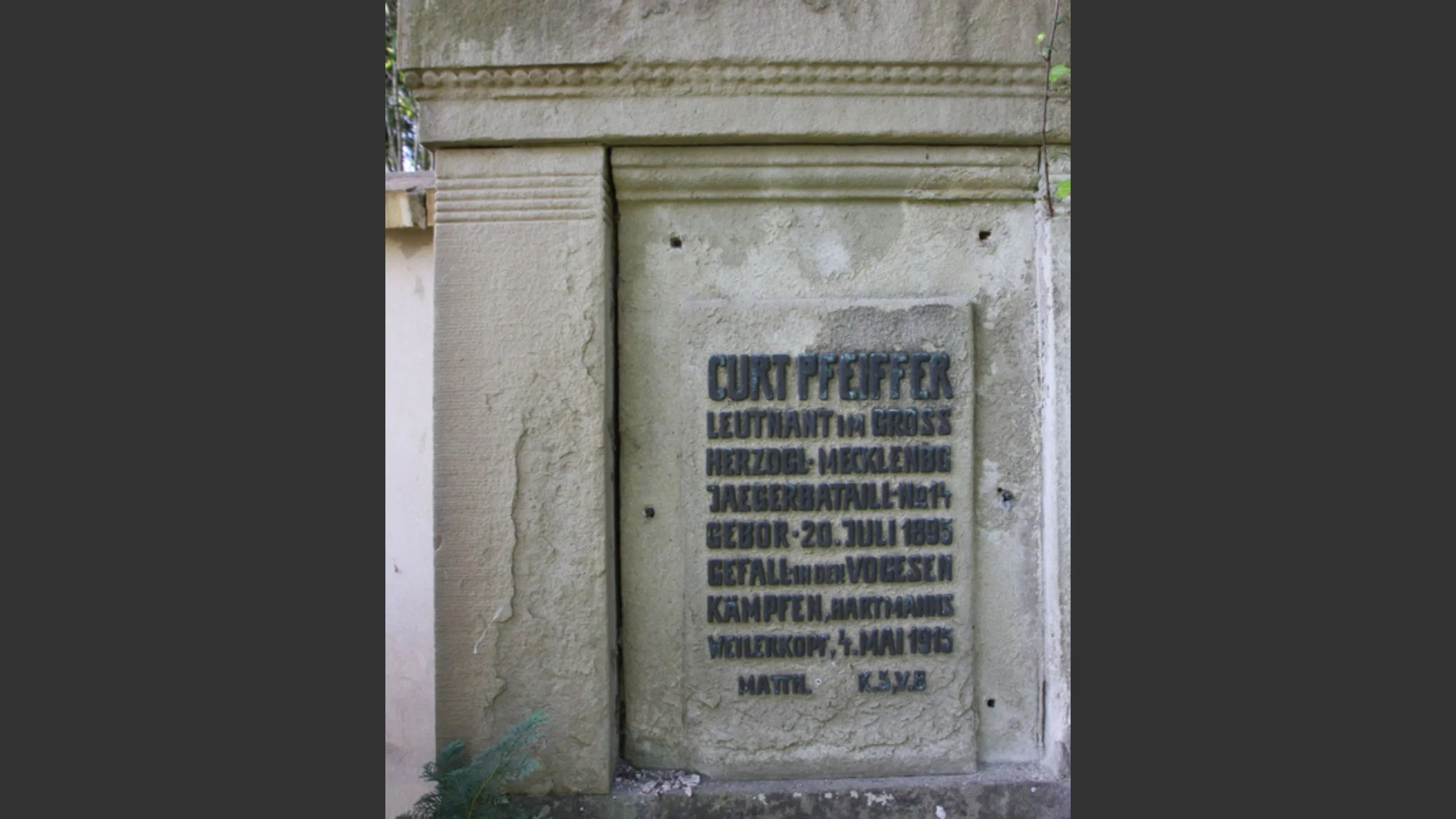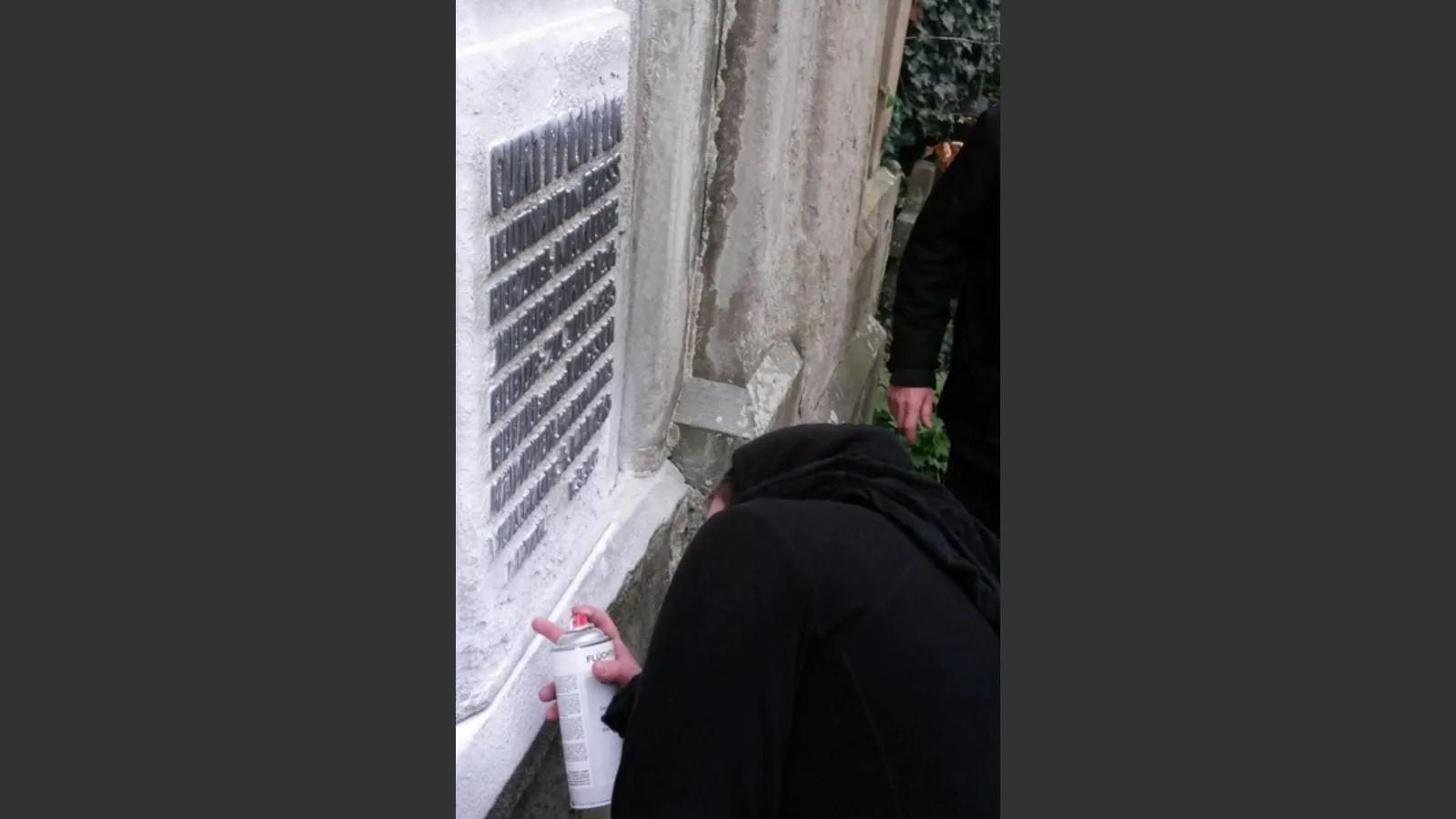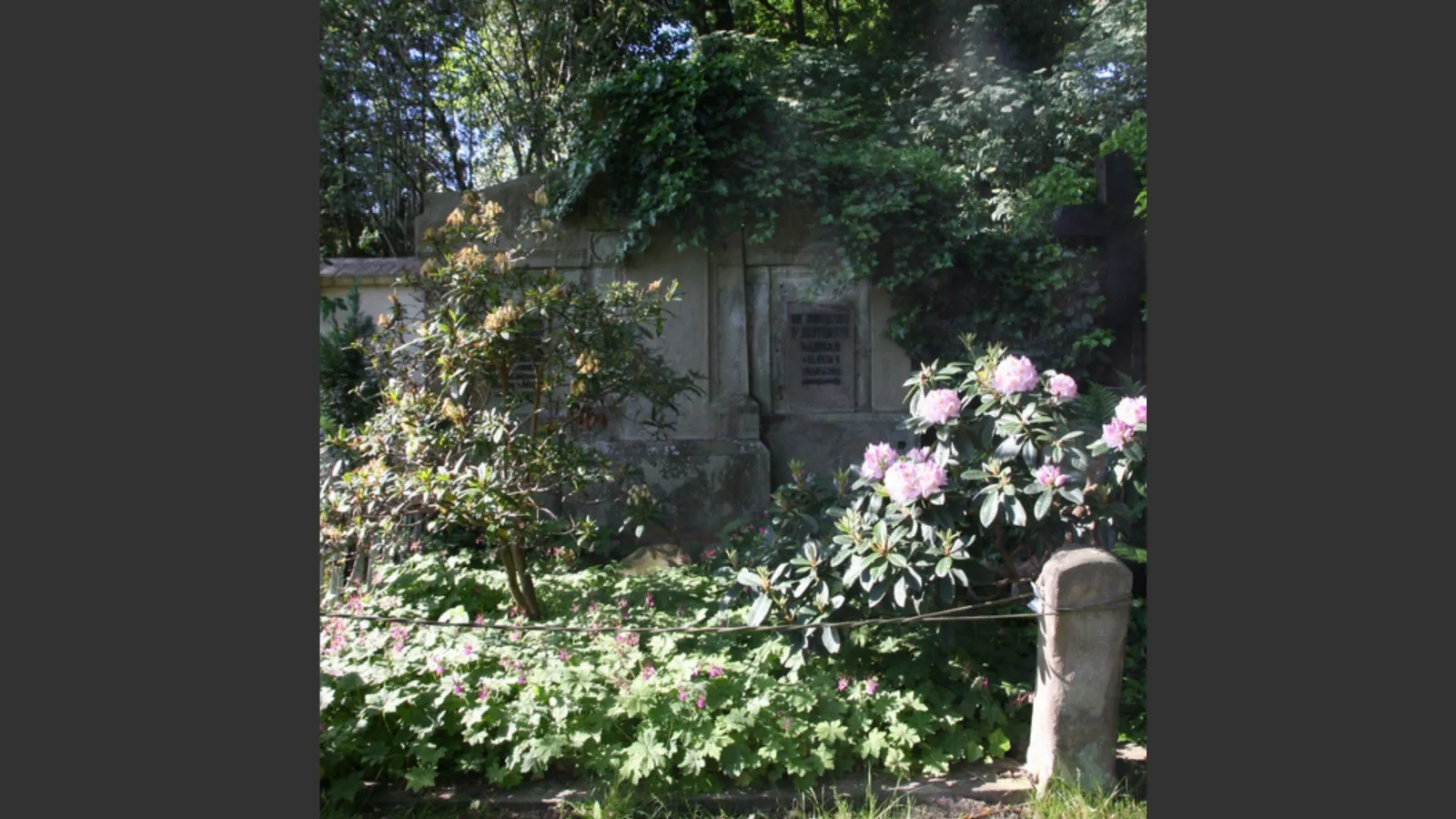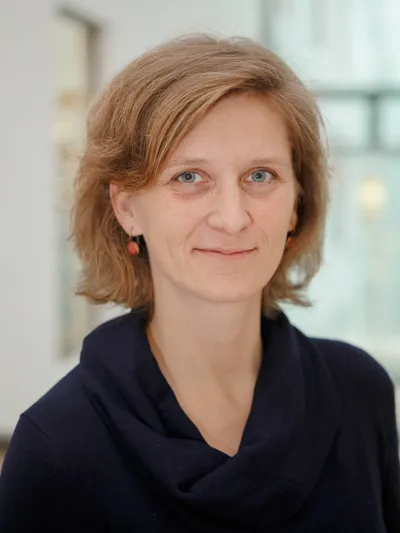Stone | Pfeiffer Tombstone
Inventory and condition survey on two elements of the tombstone as well as the creation of a damage catalogue with resulting damage cause model and concept development.

Loan : Bornstedt cemetery, Potsdam
Dating: beginning of the 19th century
Description
In cooperation with the Bornstedt Cemetery, the students Katrin Bannasch and Almuth Escher were entrusted with the gravestone of the Pfeiffer family.
In their fifth and sixth semesters, they are now working on a restoration concept based on two elements of the tombstone.
for re-installation at its location in the Bornstedt cemetery.
Furthermore, a concept for the possible overall restoration of the remaining gravestone elements is to be drawn up.
Curt Pfeiffer's gravestone slab and the flanking side piece were dismantled for processing and transported to the stone restoration workshop of the University of Applied Sciences Potsdam.
This is the inscription slab of Lieutenant Curt Pfeiffer, who was killed at the age of 20 during World War I in the 1915 war of position at Hartmannweilerkopf. The other profiled element closes the gravestone on the left side and has no inscription.
On the right side of the gravestone is the inscription plate of his father, Major (ret.) Hans Pfeiffer, who died in March 1907 at the age of 47. In addition, there is a single oval grave slab in front of the tomb dedicated to a 4-year-old boy named Hans Dietrich Erdmann, who died in 1925.
The gravestone comprises 14 elements and its external dimensions are 2.87m x 3.04m x 0.36m (height x width x depth). The stone matrix is very homogeneous and in protected areas the stonemasonry traces are clearly visible.
The letters of the inscription have missing parts on both inscription plates. The dowel holes next to the inscription fields suggest a former ornamentation that was probably removed later.
An inventory and condition survey will be carried out, which will be followed by a damage catalogue and a resulting cause model.
This will then provide the clues for a subsequent restoration and measure concept for the two individual parts and should be transferable to the entirety of the tomb.
The main factors of damage can already be counted in advance as the installation outdoors and the biogenic growth, especially in the base area.
The seasonal change in temperature and the high humidity probably led to further damage, such as areas of sanding, the formation of shells and strong reweathering.
Project participants
Project support
Project supervision & responsibility
- Prof. Gottfried Hauff (project supervision)
- Mr Merk, responsibility on the part of the Lower Monument Protection Authority
Students
- Johanna Menningen, tutor in the 2nd Master's semester
- Katrin Bannasch, 5th semester, processor
- Almuth Escher, 5th semester, processor


